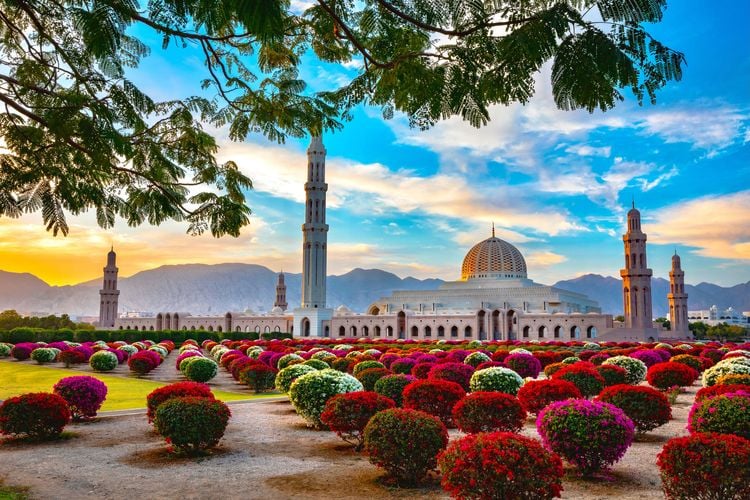In old Muscat, the port is guarded by two 16th-century Portuguese forts: Jalali and Mirani. These two Portuguese forts flank the entrance to Muscat's old port. They were built in the 16th century, when the Portuguese settled in the Omani capital to create a trading post on the route to India. You can only visit the outside of these two forts.
The Sultanate of Oman is dotted with forts: there are more than 500 of them, making it difficult to visit them all! Built by the Omanis (inland) or the Portuguese (on the coast), they add an appreciable cultural dimension to this country of desert, oases and mountains.
These magnificent structures, some of them imposing, resemble enormous sand castles dominating the landscape or defending the coastline. Twenty-two of them are located in the Muscat, Sour, Nizwa and Salalah regions, as well as on the Musandam peninsula. They are furnished as they were in those days, with carpets and cushions to lull you to sleep in the coolness of the rooms, and traditional utensils in the kitchens.
Each of these buildings has a special feature or curiosity linked to its architectural elements or geographical position. The forts of Muscat, Nizwa, Jabrin, Bahla, Nakhl (the largest in the sultanate) and Rustaq are all must-sees!
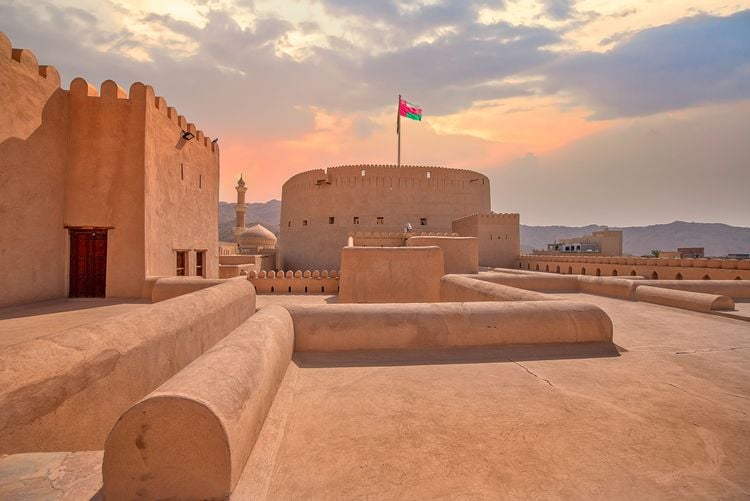
Nizwa Fort, one of the most beautiful in the Sultanate
- © Jahidul-hasan / Shutterstock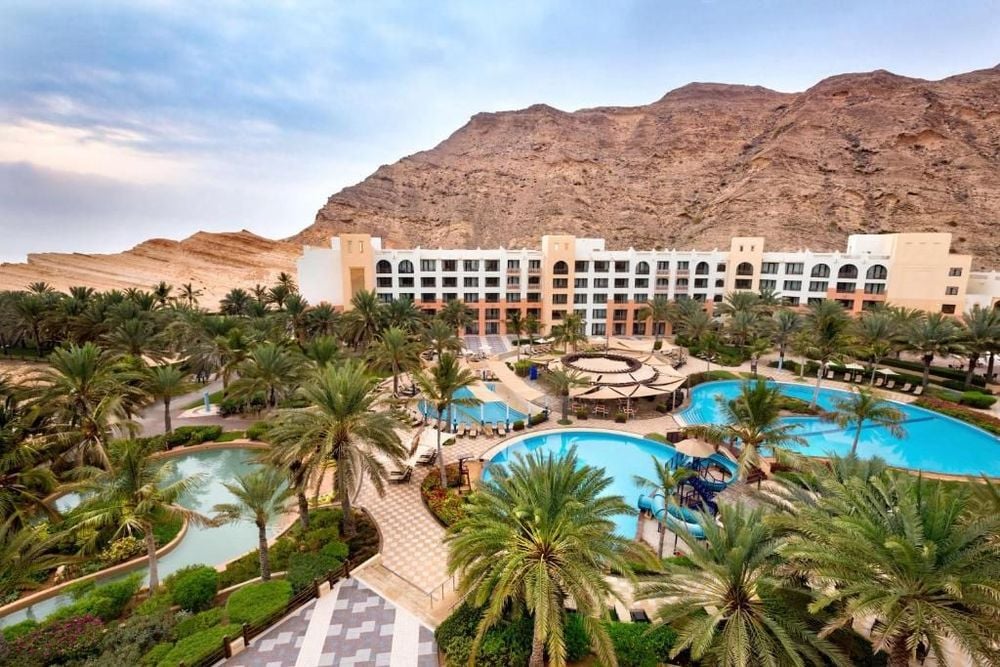 Oman
Oman
Shangri-La Barr Al Jissah, Muscat
Very nice hotel by the sea!Muscat's forts
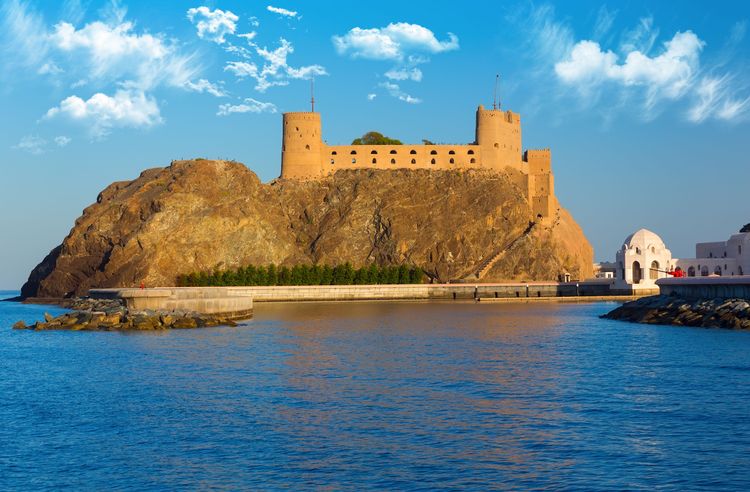
Fort Al-Jalali in Muscat
- © Pearl-diver / Shutterstock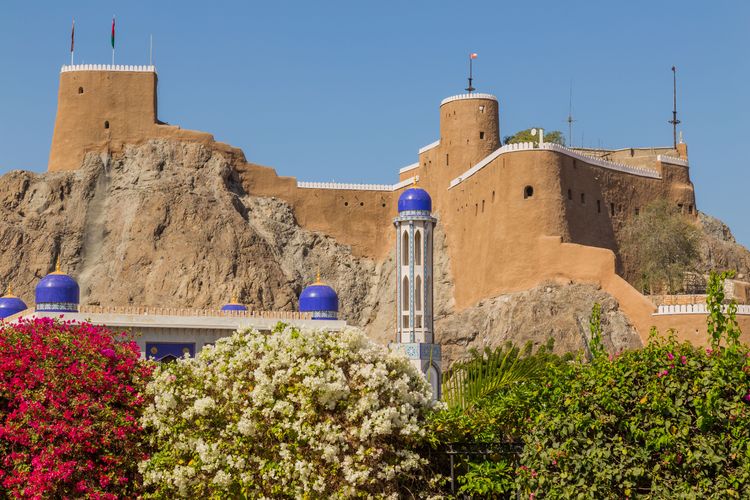
Al Mirani Fort in Muscat's old town
- © rui vale sousa / ShutterstockOpposite, along the cliff that closes Muscat Cove, are inscriptions carved into the rock. These "graffiti" are around 150 years old. They were left by sailors calling in at the port.
Nizwa Fort
Built in the 17th century by Imam Sultan bin Saif al-arabi, who drove the Portuguese out of Oman in 1650, Nizwa Fort boasts a vast 24-metre-high tower overlooking the souk, the Sultan Qaboos mosque with its once silvery-blue dome now painted the colour of the desert, and the Nizwa palm grove.
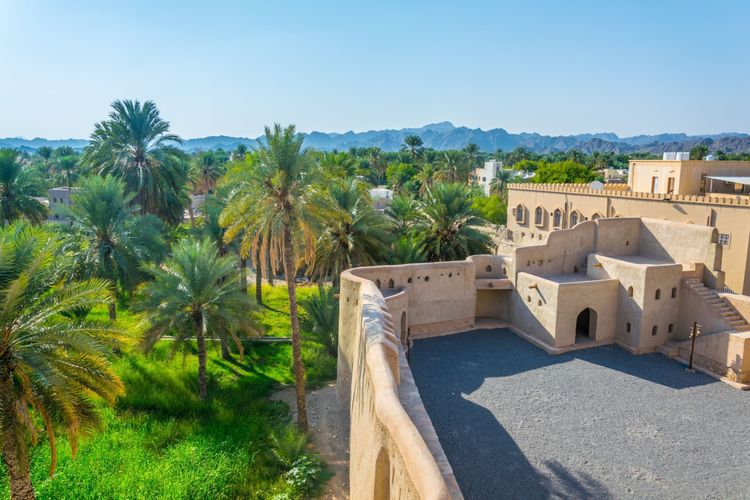
Vue sur la palmeraie depuis le fort
- © trabantos / ShutterstockThe climb up the tower is punctuated with trap doors, orifices through which boiling oil was poured and other traps designed to keep out undesirables. You can admire a superb view of the oasis from the sentry walk. Restored in 1998, the fort houses a highly interesting interactive exhibition. A secret tunnel is said to link it to Bahla Fort, 50 km away!
Jabrin fort
Dating from the 17th century, the Jabrin fort, 5 km from Bahla, is notable for its interior, a true masterpiece of Omani architecture. It is a jewel with its elaborate ceilings and moucharabieh windows! It served as the secondary residence of Imam Bil'arab bin Sultan, and was home to more than 300 people at the time.
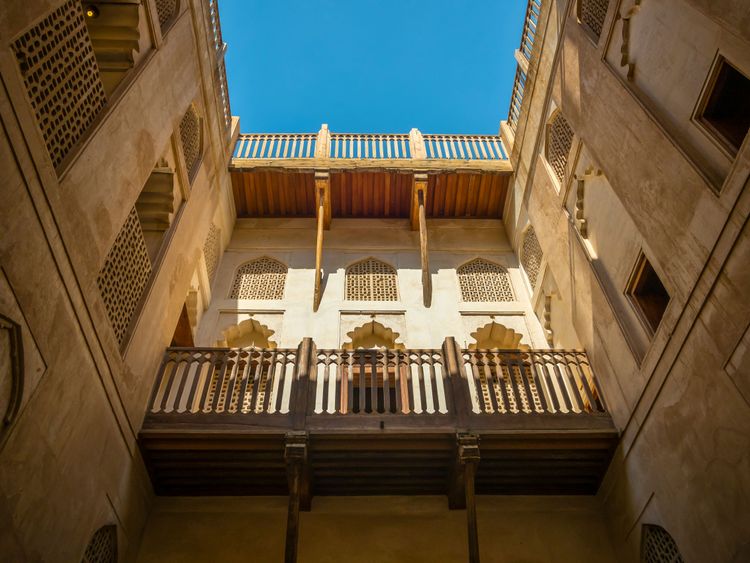
Intérieur du fort de Jabrin
- © Video Media Studio Europe / ShutterstockRestored in the 1980s, Jabrin Castle is renowned for its ornate ceilings, which are said to be the finest in the country. Once on the roof, you are greeted by views of a palm grove, vast plains and mountains.
Bahla Fort
The town of Bahla was once surrounded by a wall more than 12 km long, pierced by 7 gates. The ruins can be seen as you approach the town, which is said to be inhabited by Djinns... The huge earthen fort, remarkably well preserved, is a UNESCO World Heritage Site. It is the oldest in the country, and the only fort in Oman built during the pre-Islamic period.
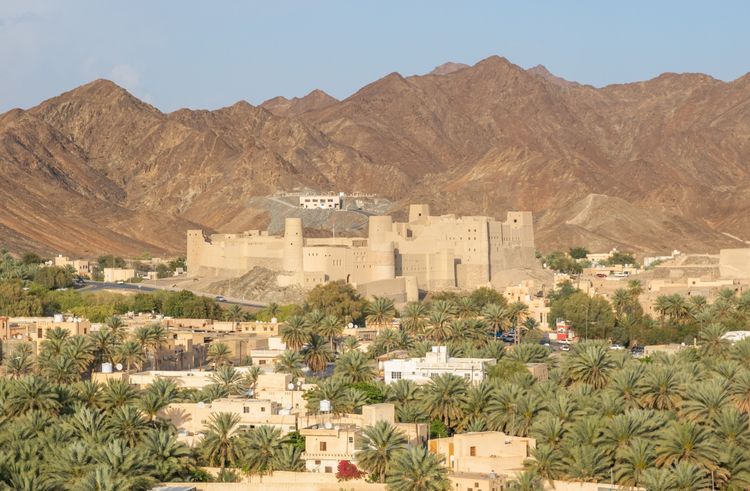
Bahla Fort, mountains in the background
- © Sirio Carnevalino / ShutterstockIt's packed with secret passages, rooms, mosques and other places to explore. Children will love it! The fort was renovated in November 2012. From the top, there are splendid views of the Jebel Akhdar mountains. It is particularly pleasant to wander through the narrow streets of the old village next to the fort, a magnificent example of medieval Islamic architecture. Located 2 hours' drive from Muscat and 25 km west of Nizwa, the town of Bahla is renowned for its pottery.
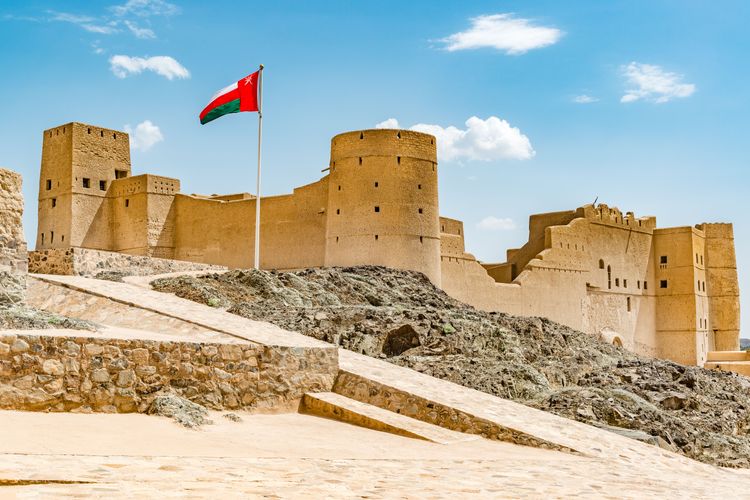
Fort de Bahla
- © Hamdan Yoshida / ShutterstockThe fort at Nakhl
It is the largest in the sultanate. Built in the 17th century on a rocky spur, it is surrounded on one side by the foothills of the Western Hajar and overlooks the Batinah plain on the other. Behind the fort, in the heart of the palm grove, is a hot spring that feeds the "aflaj" (plural of "falaj"), the traditional irrigation channels running alongside the plantations.
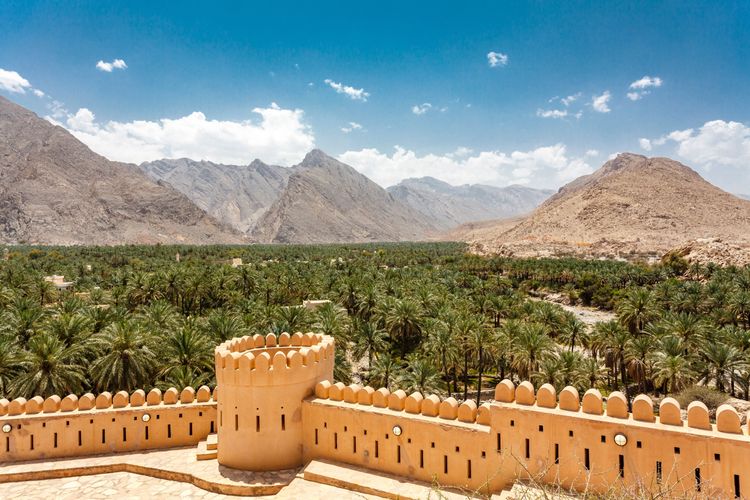
Superb panoramic view from Nakhl fort
- © Jan Willem van Hofwegen / ShutterstockThe fort's ramparts are 30 metres long and include 6 watchtowers. From inside these towers, through openings in the thick walls, you can enjoy a spectacular panorama.
Rustaq fort
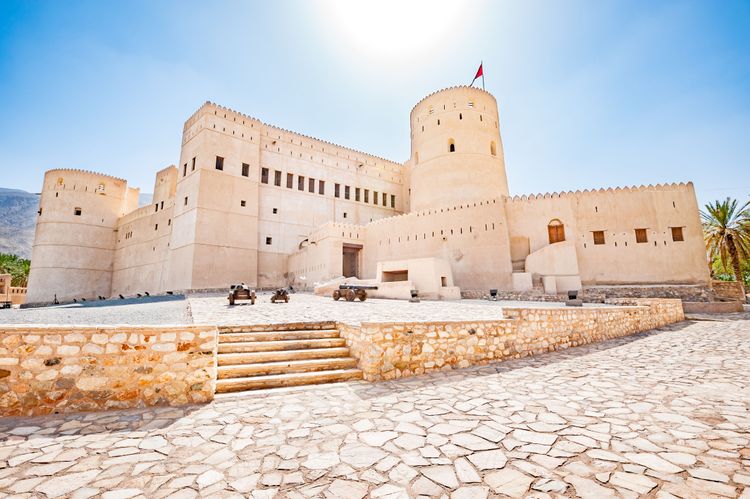
Rustaq Fort
- © Hamdan Yoshida / ShutterstockLike most of the Omani forts, Rustaq has been carefully renovated, and within its thick walls, elements of life in days gone by can be seen: carpets and cushions in the bedrooms, traditional utensils in the kitchens, weapons in the guardrooms...
